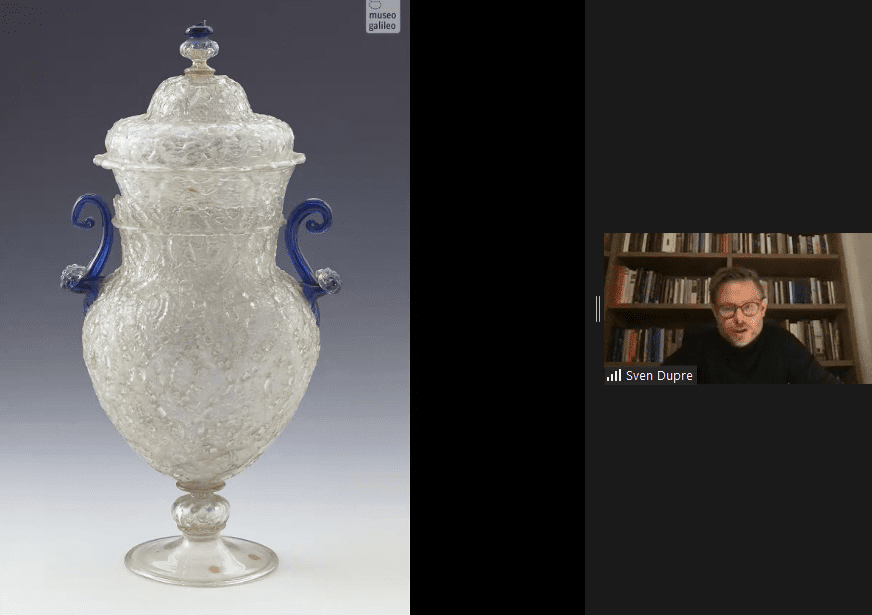By Catie Crandell, Humanities Council
Sven Dupré, whose work explores the intersections of European art and science, delivered a talk on November 18 on “the history of glass,” at the invitation of the Committee on Renaissance and Early Modern Studies. A highly distinguished scholar, Dupré is currently Professor of History of Art, Science and Technology and Head of Art History at Utrecht University and the University of Amsterdam. As Professor Nigel Smith jokingly noted in his introduction, “Sven’s CV is forty pages long” and stands as a testament to the enormous range of his interests.
The history of glass is far richer and more complex topic than meets the eye. Although today, glass is “ubiquitous even to the extent that it has almost become invisible,” Dupré explained that this “ubiquity has not always been there.” In a talk entitled “The Art of Glassmaking and the Nature of Stones: The Role of Imitation in Anselm De Boodt’s Classification of Stones,” Dupré offered a long durée history across medieval and early modern periods, exploring glass as a both a material and a medium of knowledge production. In tracing the multifaceted qualities of glass and its development across history, Dupré explores the ways that glass influenced fields such as alchemy and chemistry and the intellectual thought produced in each.
Dupré’s account “cut[s] across the various qualities of glass”: its “malleability when it’s hot, translucency and brilliant colors, its transparency and also its fragility.” Glass’s appeal is firmly rooted in the duality of these characteristics. Across its various states, it can be soft or hard, clear or cloudy, strong and fragile. It is both a naturally occurring material and a man-made artisanal object that can serve both functional and decorative purposes.
The figure at the center of Dupré’s talk is Flemish physician Anselm De Boodt, whose seminal work on the identification and classification of gemstones was perhaps the most important of the 17th century. Published in 1609, Gemmarum et lapidum historia appeared in the same year that Galileo first looked through telescopes at the stars, using lenses made of glass. The importance of De Boodt’s work to Dupré’s project lies in its how the comparisons between glass and gemstones highlight certain desirable qualities of each.
The digital talk, attended by a wide range of scholars from diverse fields, was followed by a Q&A that allowed for discussion of everything from glass’s lack of tensile strength to its place within the hierarchy of fine arts. Questions were posed on how early texts on glassmaking do or do not account for the labor required to produce it and how glass as a metaphor figures in images of transformation.
Watch the full video of the talk here.
Dupré, invited to speak by the Committee for Renaissance and Early Modern Studies, was scheduled to deliver a Faber Lecture in the Spring of 2020, which will be postponed until it is safe to deliver lectures in person on campus. Dupré kindly offered this fascinating talk and discussion as an intermediary event and lead-up to the Faber Lecture, which is tentatively planned for the Fall of 2021.
















